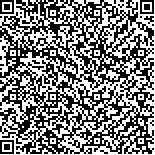|
| 引用本文: | 周璐,黄卫东,吕泉.干湿条件下沥青自愈合性能评价与机理分析[J].建筑材料学报,2021,24(1):137-145 |
| |
|
| |
|
|
| 本文已被:浏览 399次 下载 59次 |

码上扫一扫! |
|
|
| 干湿条件下沥青自愈合性能评价与机理分析 |
|
周璐, 黄卫东, 吕泉
|
|
同济大学道路与交通工程教育部重点实验室,上海201804
|
|
| 摘要: |
| 利用沥青拉拔试验对5种改性沥青的黏结与自愈合性能进行了对比,考虑干燥与潮湿2种愈合养护状态以及改性剂掺量的影响;在拉拔试验的基础上,利用傅里叶变换红外光谱(FTIR)对破坏愈合再次破坏的沥青样品进行分析,探究了沥青自愈合性能与分子结构之间的相关性.结果表明:线型苯乙烯丁二烯苯乙烯嵌段共聚物(SBS)改性沥青、橡胶改性沥青、TB胶粉改性沥青及高密度聚乙烯(HDPE)改性沥青的黏结性能均低于基质沥青,岩沥青改性沥青的黏结性能则远优于基质沥青;HDPE改性沥青、橡胶改性沥青与合适掺量的岩沥青改性沥青具有更为优异的自愈合能力;线型SBS改性沥青、橡胶改性沥青、TB胶粉改性沥青、HDPE改性沥青、岩沥青改性沥青的推荐改性剂最佳掺量分别为3%、18%、10%~15%、8%、12%~20%;沥青混合料的自愈合性能与集料表面孔隙对沥青中含较少支链结构的分子选择性吸附之间存在较强相关性. |
| 关键词: 自愈合性能 黏结性能 愈合养护条件 拉拔试验 |
| DOI:103969/j.issn.1007 9629202101019 |
| 分类号: |
| 基金项目:国家自然科学基金资助项目(51778481,51978518,51908426) |
|
| Evaluation and Mechanism Analysis of Asphalt Self healing Property under Dry and Wet Conditions |
|
ZHOU Lu, HUANG Weidong, L Quan
|
|
The Key Laboratory of Road and Traffic Engineering, Ministry of Education, Tongji University, Shanghai 201804, China
|
| Abstract: |
| The adhesion and self healing properties of five kinds of modified asphalt were evaluated by using pull out test. The influences of dry and wet healing conditions and modifier contents were investigated. Based on pull out test, the samples of damaged healing redamaged asphalt were analyzed by Fourier transform infrared spectroscopy(FTIR) test, and the correlation between self healing performance and molecular structure of asphalt was explored. The results show that:the bonding properties of liner styrene butadiene styrene(SBS) modified asphalt, crumb rubber modified asphalt, TB rubberized asphalt and high density polyethylene(HDPE) modified asphalt are lower than that of base asphalt, while that of gilsonite modified asphalt is much better than that of base asphalt; HDPE moditified asphalt, crumb rubber modified asphalt and gilsonite modified asphalt with suitable content of gilsonite have more excellent self healing ability. The recommended contents for linear SBS, crumb rubber, TB rubber, HDPE and gilsonite are 3%, 18%, 10%15%, 8%, 12%20% respectively. There is a strong correlation between the self healing performance of asphalt mixture and the molecular selective adsorption of asphalt with less branched chain structure by aggregate surface pores. |
| Key words: self healing property bond property healing condition pull out test |
|
|
|
系统正在查找本文的参考文献,请稍候...
|
|
系统正在查找本文的被引信息,请稍候...
|
|
系统正在获取相似文献,请稍候...
|
|
|